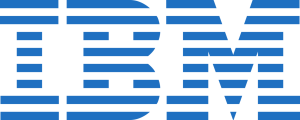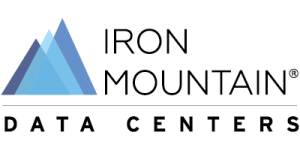Who’s Building the Next 200MW Colocation Campuses—and Why?
The Era of Mega-Scale Data CentersIn 2025, the global data center industry is witnessing the unprecedented rise of 200MW+ colocation campuses—vast, purpose-built ecosystems designed to host hyperscale cloud regions, AI training clusters, and sovereign cloud deployments. These are no longer single-facility projects. They are multi-phase, multi-building digital cities that span hundreds of acres and scale beyond 300MW, creating the industrial backbone of the digital economy.A select group of forward-thinking data center developers—funded by sovereign wealth funds, private equity giants, and hyperscaler partnerships—are spearheading this shift. What’s driving this race toward mega scale? The explosive growth of generative AI, global streaming platforms, and the increasing push for regulatory-compliant cloud regions demand infrastructure that is bigger, denser, and more resilient than ever before. Only the largest, most power-dense campuses can meet these next-gen requirements.Why 200MW+ Campuses Are Emerging NowHyperscale AI and Cloud WorkloadsThe rise of generative AI workloads is fundamentally reshaping infrastructure demands. Training large language models like OpenAI’s GPT, Meta’s LLaMA, and Google’s Gemini consumes tens of thousands of GPUs running for weeks or months, drawing sustained power loads of 50-150MW per deployment.Cloud providers, anticipating this growth, are now pre-leasing entire 50-100MW phases years in advance. No single facility can meet this scale. Developers must build full campuses to host these AI clusters, deliver the necessary high-density power, and support the liquid cooling technologies required to run them efficiently.Supply Chain and Grid LimitationsAs demand rises, supply chain and energy grid limitations are forcing consolidation:Developers are working directly with utilities to secure multi-gigawatt grid connections, rather than piecing together smaller builds.Streamlining permitting processes and environmental impact assessments at the campus level reduces project timelines and approval cycles.Standardized, modular designs allow for faster, repeatable deployments across different global markets, reducing construction costs per MW and shortening time-to-market.Regional Cloud ExpansionThe globalization of cloud has created dozens of new markets where hyperscalers are required to build sovereign-compliant regions. Emerging sovereign cloud regions in:Saudi Arabia, UAE, Qatar (Middle East digital corridors).India, Indonesia, Thailand (Asia's booming data economies).Brazil, Chile, Mexico (Latin America's cloud frontier).These markets require not just isolated buildings but entire campuses designed to meet redundancy, scaling, and data sovereignty demands.Who’s Leading the ChargePrivate Equity-Backed PlatformsPrivate equity-funded operators like Vantage Data Centers, EdgeConneX, and Global Switch are scaling aggressively:Backed by global capital from DigitalBridge, KKR, and GIP, they’re rolling out campuses across North America, EMEA, and APAC.These platforms leverage repeatable campus designs and deep hyperscaler relationships to win multi-region deployments.Hyperscaler-Led CampusesAmazon, Google, and Microsoft are no longer just leasing capacity—they are building their own:Constructing mega campuses to own the network topologies, reduce latency, and optimize interconnect architectures.Integrating renewable energy generation and storage at the campus level to meet sustainability targets.Ensuring sovereign compliance by building isolated cloud regions that meet local regulatory mandates.Sovereign Wealth-Backed DevelopersNational investment funds are also getting involved, fueling the development of national cloud infrastructure:Saudi Arabia’s PIF, Abu Dhabi’s Mubadala, and Singapore’s GIC are driving hyperscale builds tied to smart cities, fintech ecosystems, and government cloud platforms.These projects are designed not just for economic growth but for national digital sovereignty.Key Locations for 200MW+ BuildsNorthern Virginia DallasStill the epicenters of U.S. hyperscale capacity. However, power and land constraints are pushing developers toward secondary locations like Phoenix and Columbus for additional capacity.Frankfurt, Madrid, and WarsawEurope’s regulatory push for sovereign cloud deployments and new peering hubs is driving mega campus builds in these regions, diversifying beyond London and Paris.Riyadh, Mumbai, and JakartaRapidly growing megacities fueling the next wave of cloud and AI demand across the Middle East and Asia-Pacific, with governments actively courting hyperscale investment.Design Considerations for Mega CampusesPower Density and CoolingLiquid cooling is being deployed at unprecedented scale to support AI workloads, reducing reliance on air-based systems.Targeting 100MW+ power delivery in a single campus phase, enabling faster AI cluster deployments.Fiber ConnectivityDevelopers are building new long-haul fiber routes to interconnect their campuses with cloud regions, internet exchanges, and subsea cables.Hyperscalers are increasingly owning their own fiber networks, bypassing traditional telecom carriers.Renewable IntegrationMega campuses are often paired with on-site solar, wind, and battery storage farms.Long-term power purchase agreements (PPAs) ensure carbon neutrality and protect against volatile energy markets.Mega Campuses Define the Next Hyperscale Era200MW+ campuses aren’t just larger data centers—they’re the next evolution of digital infrastructure ecosystems. Developers who can secure scalable power, build efficiently, and deliver in emerging global markets will define the next decade of hyperscale cloud, sovereign cloud, and AI infrastructure growth.The hyperscale arms race is no longer about how many data centers a provider has—it's about who controls the largest, most power-dense campuses capable of supporting the world's most demanding workloads.
























